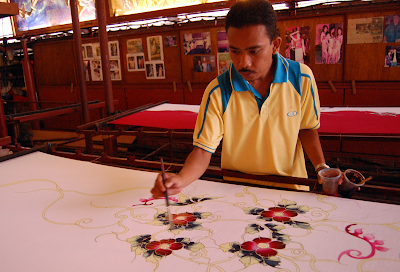Featured
- Get link
- X
- Other Apps
Roland Barthes
The author of Le Degré zéro de l'écriture (1953) and Roland Barthes par Roland Barthes (1974) highlighted the fictional aspect of biography better than anybody else.
Therefore, we shall only briefly summarize a few moments from a life whose intellectual detours accompanied and contributed to the transformation of all dimensions of French, if not European, thinking in the second half of the 20th century.
His writings amply indicate his function as the photographer of the so-called postmodern school of thought's fundamental questions.
In addition to writing several various works on fashion, Roland Barthes is also renowned for his works on the political use of myths, literary production, mass culture, photography, semiological approaches, and passionate desire.
These books are often cited but seldom read for themselves.
Nevertheless, a totally fresh approach to the phenomenon of fashion is still required.
FRACTURES OF LIFE
Following Jean-Baptiste Farges and Andy Stafford, one can attempt to separate three points in time—though they are also three directions, closely related but not sequential—in the activities and life of Roland Barthes: the polemical journalist immediately following the war, the triumphant yet marginal university professor of the postwar boom, and the elusive "novelist" lauded by the entire left-leaning intelligentsia in the 1970s.
More significant than the specifics of these events are the philosophical ideas that influenced Barthes.
He experimented with building a relationship between these phases (he numbered two more) and a "intertext" of persons who influenced him in the "Phases" portion of his pseudo-autobiography, Roland Barthes par Roland Barthes: The trio of Sartre, Marx, and Brecht inspired him to dismantle social mythologies (Mythologies was published in 1957); Saussure led him in his work in semiology; the conversation with Sollers, Kristeva, Derrida, and Lacan inspired him to take intertextuality as a subject; and Nietzsche's influence corresponded to the joy of writing during and about his final years, when he produced books about the enigma of life (1977).
Written soon after his mother passed away, La Chambre claire (1980) presents a restrained emotional interpretation of the delusions of reality's resuscitation via photography and gives two alternatives: enjoy the spectacle of the false, or "confront untreatable truth."
This constitutes a program of inquiry—political and aesthetic—that Barthes seems to have carried out across all of his writings and throughout his whole life, even in the section of his writing titled "stable ephemera" where he discusses clothing and fashion.
An Interesting Family Tree.
Little is known about how early Barthes' interest in clothes (at least the clothing of others), its communicative functions, and the problems of approach and reconstruction that those functions give birth to, began to take shape.
His contribution was that of a sociology student, taking into account a vast and poorly understood phenomena that had seldom ever been researched in France.
There are various ways to interpret this piece, but it may also be seen as the work of an aesthete who was entranced by the way materials felt and the way a white garment flared on the beach in Bayonne in the 1930s.
This picture, which is a fuzzy portrait of his mother, serves as both the beginning and the ending of Roland Barthes' introduction.
Here, it's impossible to help but see the traces of a sentimental affinity with the mother and a personal dandyism maintained with and by discrete and stylish friends.
The fact that this genealogy was partially founded on an unambiguous homosexuality ("La déesse H.," "L'adjectif," "Actif/Passif," and other vignettes in Roland Barthes) was never made clear or "brought out" may be something D. A. Miller (1992) has a point about.
But Barthes' work is literally obsessed with the body, its costumes, and the meanings and functions of those costumes.
This is evident in his earliest theater criticism ("Les maladies du costume de théâtre" of 1955, reprinted in Essais critiques [1964]), as well as his numerous analyses of Brecht's staging of Mother Courage from 1957 to 1960.
Even as late as 1980, he still finds inspiration for his last book, La Chambre claire, in certain fashion aspects from the images that serve as its illustrations.
Parallel to this, he published his reviews of books by authors J. C. Flügel, F. Kiener, H. H. Hansen, and N. Truman in 1959's Critique under the title "Language et vêtement," who were at the time unknown to French experts in the field.
He also published the seminal article "Histoire et sociologie du vêtement" in Annales in 1957, followed by "Pour une sociologie du vêtement" in 1960 Other writings, including "Le bleu est à la mode cette année" (Revue française de sociologie, 1960), "Des joyaux aux bijoux" (Jardin des Arts, 1961), and "Le dandysme et la mode" (United States Lines Paris Review, July 1962), demonstrate the growth of a semiological approach to clothing as well as the concern for a multifaceted style of writing that can adeptly adapt to different audiences.
For instance, he wrote "Le match Chanel-Courrèges," a piece resembling one of the last Mythologies, in the women's magazine Marie-Claire in 1967.
The final sentences of Roland Barthes are still concerned with the weight of looks, even if the language related to fashion was no longer actively questioned after that date: "Writing the body.
the remainder, a clumsy, stringy, fluffy, tattered creature, the robe of a clown, but not the skin, muscles, bones, or nerves.
For a Systematic View of Fashion.
The austere and ornate book Le Système de la mode (1967) is the result of a planned thesis in which a linguistic theory (the clothing code) emerges, thrives, and ultimately self-destructs.
The book's opulent language and lack of imagery have turned off many readers and caused a number of misunderstandings.
The book's author, who is well known and esteemed for earlier, more "literary," works, assumes the position of an advocate of rigid scientism, which he yet claims in the prologue is already out of date.
Le bleu est a la mode) and a second portion (one-fourth of the book), which is unexpected in a work with a methodological purpose: an essay on the rhetoric of fashion journalists together with scathing sociological criticism, he opposes and even contradicts this.
According to Stéphane Mallarmé, "Fashion produces something out of nothing," and that "something" is words in the first place.
Therefore, Le Système's purportedly linguistic assessments are based only on the language and syntax of the captions for fashion photos shown in publications from the 1960s.
Never forget that this was a practical exercise demanding the creative invention of new ideas due to the clever and innovative application of a new reading approach (semiology) to a constrained object.
Many readers who criticize the book for not speaking directly about the non-verbal communication carried out via clothes fail to understand those boundaries, which Barthes plainly lays out in his book and in contemporaneous interviews.
Barthes is not interested in clothing as an artifact (clothing as it is made) or in its figurative representations (iconic clothing), despite the fact that the 1957 article's research program included both of these diverse topics.
However, that program was too broad and was less cautious when it came to linguistic analogy issues.
In order to create writing that may be appropriated, he wants to understand "what happens when a real or fictional item is translated into words."
The book's delayed English publication (1985) and limited reception (in terms of quantity and quality) are partially explained by this lack of understanding, which is frequently overlooked, and various expression ambiguities.
These factors must, however, be examined generation by generation and country by country.
Le Système is still a vital resource for sociologists and historians of clothing, at least in France, but outside of a small group of French ethnologists like Yves Delaporte, Jeanne Martinet, and Marie-Thérèse Duflos-Priot who do not limit their research to "spoken," or written, clothing, Le Système has not attracted a large readership.
It is a popular entry in a bibliography, but it has not really been assimilated despite the fact that it has influenced numerous clothing descriptive systems used by museums and given fashion experts a number of useful metaphors.
As Barthes intended, the book must first be viewed as a historical artifact, a dated polemic, with a methodological focus.
However, it is also a book where one can enjoy straying while learning about the state of fashion rhetoric in the 1960s, the state of cutting-edge practices connected to structuralism, as well as the state of French laggardship in clothing research and the still-novel efforts to introduce the field to the indispensable theory required for any study of a cultural phenomenon.
A cardigan is athletic or formal depending on whether the collar is open or closed, according to the phraseology of the fashion magazine, whose ideology is revealed by dissecting it into subsets and components and by the concurrent variations (mixed or opposed) of signifier and signified.
By rejecting the elitist linearity and facile psychologism of "histories of costume," engaging in a modern, rather than nostalgic, analysis of consumerist ideologies, and performing high-risk, cross-disciplinary work while taking into account both individual and group tendencies, the long-term and diverse rhythms of form and custom transformation, as well as the transient nature of the analyses of those who produced them, Barthes was a pioneer: Le Système de la mode should also be viewed as an invitation to analyze (or perhaps deconstruct) the discourses that we create in relation to all of our research subjects.
It should always be done seriously and ironically, without any illusions.
Find Jai on Twitter | LinkedIn | Instagram
See also:
Historical Studies of Fashion, Theories of Fashion.
References And Further Reading:
Barthes, Roland. Œuvres complètes. 3 vols. Paris: Seuil, 1993–1995.
—. The Fashion System. New York: Hill & Wang, 1983.
Boultwood, Anne, and Robert Jerrard. “Ambivalence, and Its Relation to Fashion and the Body.” Fashion Theory 4, no. 3 (2000): 301–322.
Delaporte, Y. “Le signe vestimentaire.” L’Homme 20, no. 3 (1980): 109–142.
Delaporte, Y., ed. “Vêtement et Sociétés 2.” L’Ethnographie 130, nos. 92, 93, 94 (1984). Special issue.
Fages, Jean Baptiste. Comprendre Roland Barthes. Toulouse, France: Privat, 1979.
Harvey, John. Men in Black. Chicago: University of Chicago Press, 1995.
Hollander, Anne. Seeing Through Clothes. Berkeley: University of California Press, 1993.
Martinet, J. “Du sémiologique au sein des fonctions vestimentaires,” L’Ethnographie 130, nos. 92, 93, 94 (1984): pp. 141–251.
Miller, D. A. Bringing Out Roland Barthes. Berkeley: University of California Press, 1992.
Stafford, Andy. Roland Barthes, Phenomenon and Myth: An Intellectual Biography. Edinburgh: Edinburgh University Press, 1998.
Wilson, Elizabeth. Adorned in Dreams: Fashion and Modernity. London: Virago, 1985. Rutgers University Press issued a revised edition in 2003.
- Get link
- X
- Other Apps











